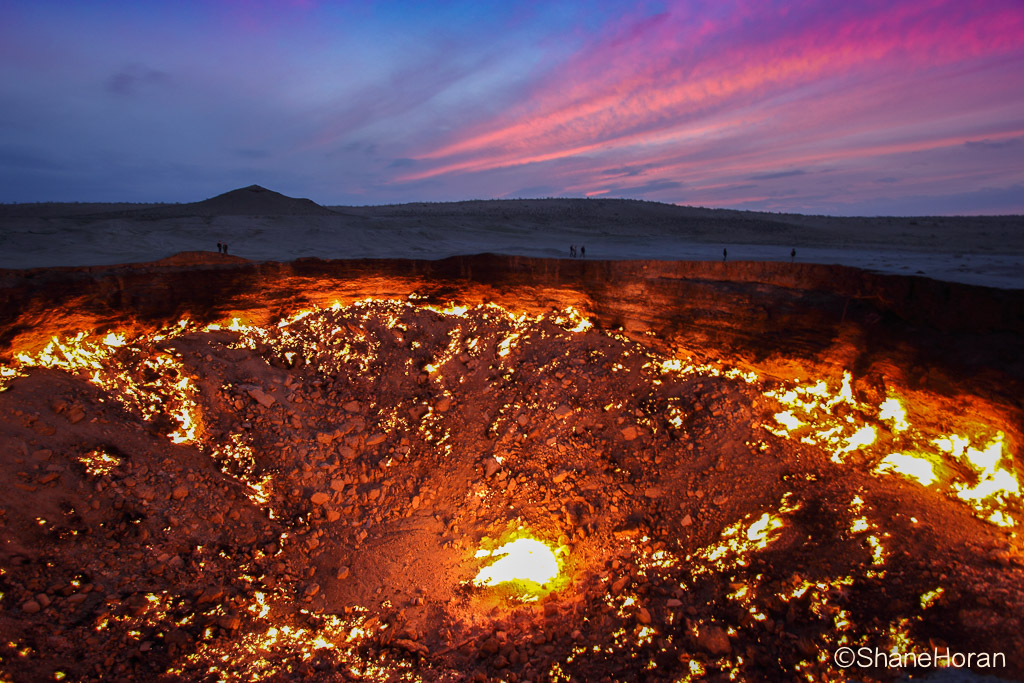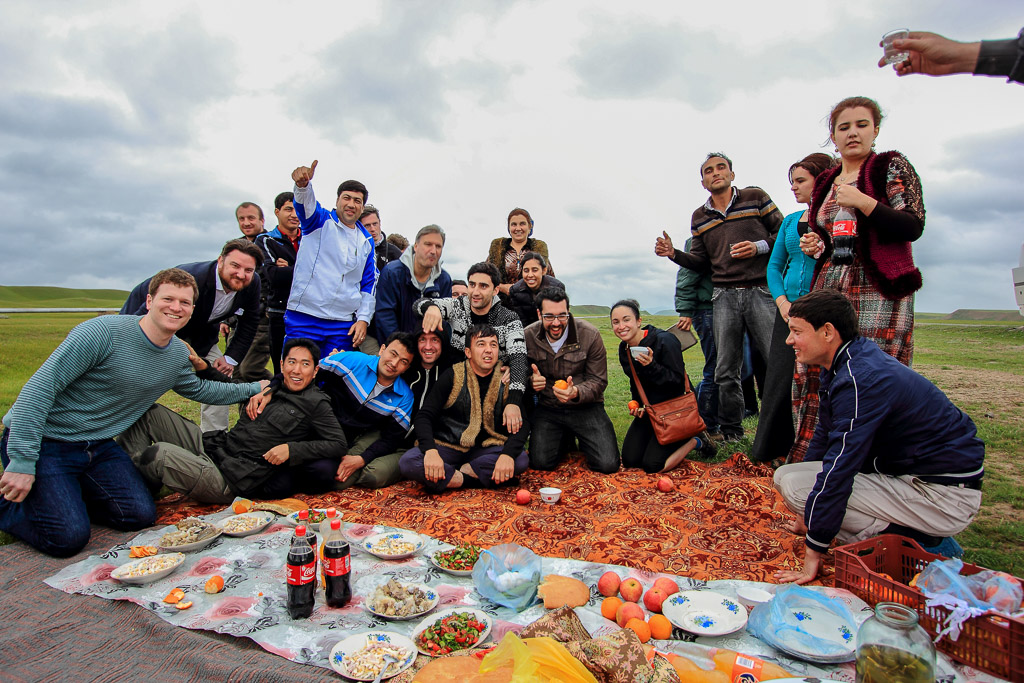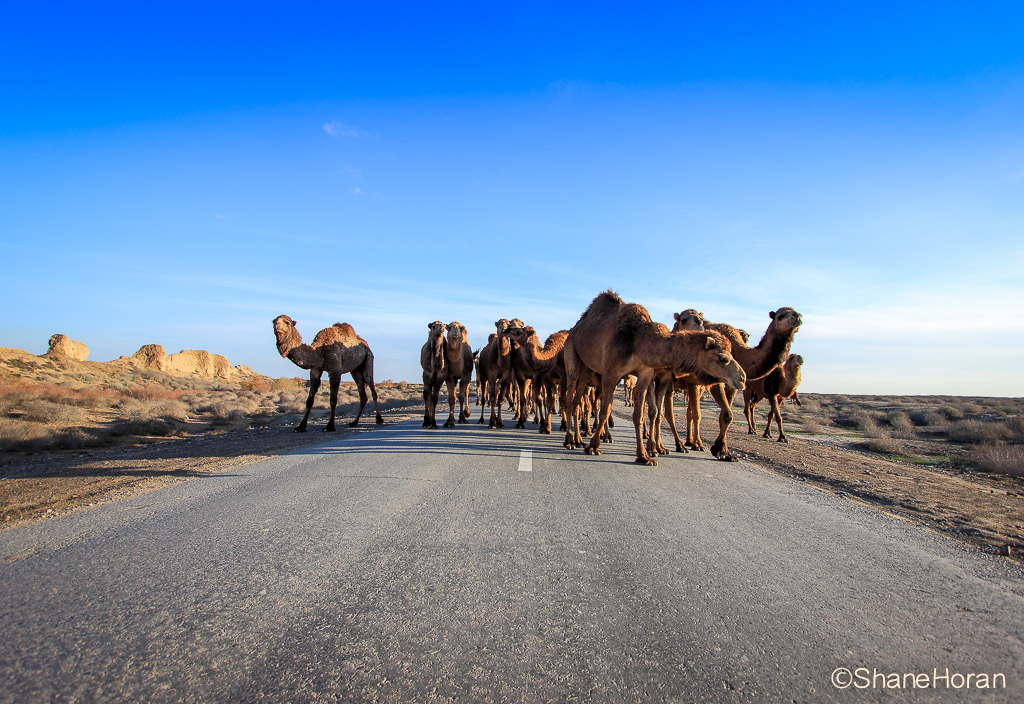One year ago, I crossed the Iran/Turkmenistan border by foot and arrived shortly thereafter in Ashgabat, the capital of one of the world’s least visited countries. The place sees fewer foreign visitors a year than Afghanistan and North Korea. A lot has already been said about Turkmenistan’s repressive nature, and cult of personality surrounding the leader. There’s more to the country than this. Here’s my favourites.
Turkmenistan in Pictures:

This is Darvaza gas crater, known as the “Door to Hell”. The world is full of tourist attractions that are well documented and overhyped. This is the exception. Darvaza is incredible, and it’s creation was a complete accident. In the 1970’s a team of Soviet drillers stumbled upon a gas pocket while searching for oil. It exploded, swallowing their machinery. The pocket was set alight to prevent the spread of methane gas, and it has been burning continuously since then. There’s no hotels, there’s no infrastructure, no sign of life for hundreds of miles in every direction. It is the most awesome thing I’ve ever seen.

Walking the streets, you’ll see locals in traditional garb. Turkmen equestrian men wear the traditional dress of Turkmenistan, a distinctive telpek sheepskin hat and a red robe covering a white shirt create a striking image.
Women too, still wear the traditional clothing of a long silk shift over narrow trousers.

One day whilst traveling through the middle of nowhere, our bus broke down. Literally the next vehicle passing by was a work group returning from a picnic day out. They saw us, immediately stopped, and piled out of the bus to set up a picnic feast for us. It was an incredible moment of sincere generosity and hospitality, something that the Turkmens are well known for. They say a visitor must be offered tea and food before even being allowed to explain why he has come. In our case it was food and copious amounts of vodka. In most cases, unexpected mishaps provide the most memorable moments on tour.

80% of Turkmenistan is occupied by the Karakum Desert, with an average population of one person per 6.5km. The area is exceptionally dry, seeing less than 100mm of rainfall annually. Soviet irrigation projects over the years caused water levels in the Aral sea to drop, expanding the desert. Camels rule the roost out here and can be found roaming the highways.






